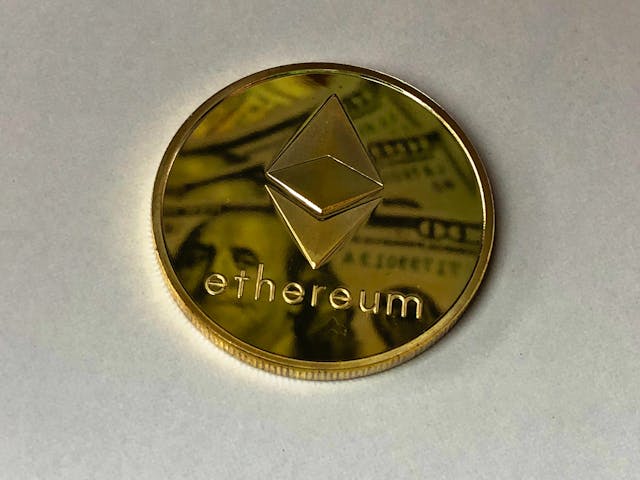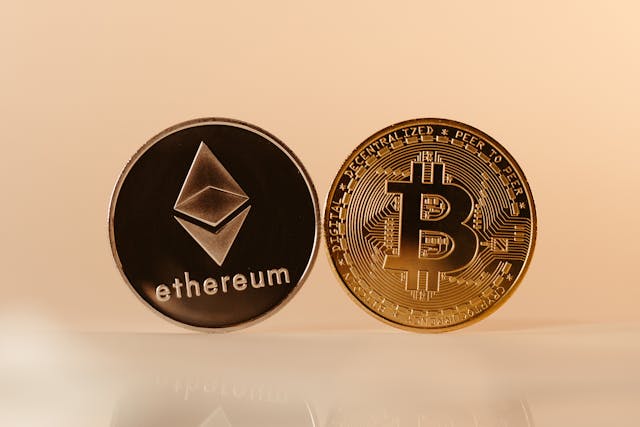Welcome to GertieBlu, where we explore the exciting world of technology and the innovations shaping our future. Today, let’s look at Ethereum—a digital powerhouse that’s transforming industries and how we interact with the digital world.
Ethereum, often compared to Bitcoin, is much more than a cryptocurrency. While Bitcoin is a digital currency, Ethereum functions as a programmable blockchain with endless possibilities. If you’re curious about Ethereum’s uses today and what its future holds, read on.
What is Ethereum?
At its core, Ethereum is a decentralized, open-source blockchain system. It’s the brainchild of Vitalik Buterin, launched in 2015, with a vision of enabling programmable contracts and applications through blockchain technology. Unlike Bitcoin, which is solely designed as a peer-to-peer digital currency, Ethereum’s unique selling point is its smart contracts and decentralized applications (dApps). Think of it as an ecosystem where people can build and execute applications without interference from third parties, like banks or governments.
Ethereum operates on its native cryptocurrency, Ether (ETH), which powers the network and acts as “fuel” for the transactions and services.
Ethereum’s Real-World Uses
Ethereum is already transforming various sectors with its versatile applications. Here are some prominent ways it’s being used today:
1. Smart Contracts
Smart contracts are self-executing contracts with the terms of the agreement written directly into lines of code. They allow for automatic, trustless transactions that only happen when certain conditions are met, eliminating the need for intermediaries. Think of real estate deals, insurance payouts, or even wills and trusts being handled instantly when conditions are fulfilled—no need for escrow or middlemen.
2. Decentralized Finance (DeFi)
DeFi is one of Ethereum’s biggest contributions to the financial world. It’s a movement that enables financial services like lending, borrowing, and trading to operate on blockchain technology. With platforms like Aave, Uniswap, and MakerDAO, Ethereum is decentralizing traditional financial systems. No more waiting for bank approvals—DeFi puts control in the hands of users, cutting out intermediaries and creating a global financial ecosystem that’s accessible to anyone with an internet connection.
3. Non-Fungible Tokens (NFTs)
Ethereum is the backbone of the NFT market, which has taken the world by storm. NFTs are unique digital assets that can represent art, music, virtual real estate, or collectibles. These tokens, which live on the Ethereum blockchain, have empowered creators by giving them a new way to monetize their work and connect directly with buyers.
4. Supply Chain Management
From food safety to counterfeit goods, Ethereum’s blockchain is being used to track the provenance of products. Blockchain’s immutable nature ensures that records are transparent, verifiable, and impossible to tamper with, making it ideal for industries that require strict auditing and tracking, such as pharmaceuticals, luxury goods, and agriculture.
5. Gaming and Virtual Worlds
Blockchain-based games like Axie Infinity and virtual worlds such as Decentraland are built on Ethereum, allowing players to truly own their in-game assets. With Ethereum, gamers can buy, sell, and trade items securely. Imagine a future where your digital avatar or virtual property is just as valuable as real-world assets!

The Future of Ethereum: What’s Next?
As Ethereum grows, it’s evolving to meet the demands of an ever-expanding user base. The next few years look incredibly promising, and here’s why:
1. Ethereum 2.0
One of the most anticipated upgrades in the crypto space is Ethereum 2.0 (or ETH 2.0). This major overhaul promises to solve some of the network’s current challenges, such as high transaction fees and slow processing times. Ethereum 2.0 will transition the network from the current Proof of Work (PoW) model to Proof of Stake (PoS), making it more energy-efficient, scalable, and faster.
Under PoS, validators—who secure the network and validate transactions—are chosen based on the number of ETH they hold and are willing to “stake” as collateral, reducing the need for energy-intensive mining. This shift is crucial for sustainability and will open up the network to more users, decentralized applications, and innovation.
2. Interoperability
The future of Ethereum also lies in its ability to work with other blockchains. As the blockchain ecosystem grows, interoperability between networks is key. With projects like Polkadot and Cosmos, which aim to bridge blockchains, Ethereum could become the foundation of a multi-chain world where different blockchains communicate seamlessly.
3. Mainstream Adoption
Ethereum is well on its way to achieving mainstream adoption. With institutional investors increasingly interested in blockchain, governments exploring central bank digital currencies (CBDCs), and global brands like Visa and PayPal integrating Ethereum-based services, the network is gaining legitimacy and visibility. The expansion of Layer 2 solutions like Polygon also ensures Ethereum can scale to accommodate billions of users without compromising security or decentralization.
4. Regulation and Institutional Involvement
As the regulatory environment becomes clearer, Ethereum’s role in finance and technology is likely to grow. Governments and institutions are beginning to recognize the benefits of blockchain, and Ethereum’s smart contracts could play a pivotal role in legal systems, supply chains, and governance models. With the right regulatory framework, Ethereum’s decentralized applications could revolutionize industries like healthcare, voting, and intellectual property rights.

Final Thoughts
Ethereum is more than just a cryptocurrency—it’s a decentralized supercomputer that’s already reshaping industries and showing us the future of finance, contracts, and the internet. With Ethereum 2.0 on the horizon and increasing mainstream adoption, we’re standing at the dawn of a new era in technology.
At GertieBlu, we love exploring innovations that change the world, and Ethereum is undoubtedly one of the most exciting. As it continues to evolve, Ethereum’s ability to empower creators, decentralize systems, and create a new economy will make it a cornerstone of the digital age.
Thank you for reading! Stay connected with GertieBlu for more insights into the world of blockchain, technology, and innovation. Keep exploring, stay curious, and let’s continue to unlock the future together!
Until next time!









